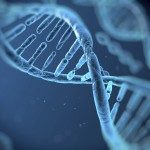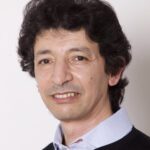Link to Pubmed [PMID] – 12588794
Hum Mol Genet 2003 Mar; 12(5): 463-71
Usher syndrome type I (USH1) is the most frequent cause of hereditary deaf-blindness in humans. Seven genetic loci (USH1A-G) have been implicated in this disease to date, and four of the corresponding genes have been identified: USH1B, C, D and F. We carried out fine mapping of USH1G (chromosome 17q24-25), restricting the location of this gene to an interval of 2.6 Mb and then screened genes present within this interval for mutations. The genes screened included the orthologue of the Sans gene, which is defective in the Jackson shaker deaf mutant and maps to the syntenic region in mice. In two consanguineous USH1G-affected families, we detected two different frameshift mutations in the SANS gene. Two brothers from a German family affected with USH1G were found to be compound heterozygotes for a frameshift and a missense mutation. These results demonstrate that SANS underlies USH1G. The SANS protein contains three ankyrin domains and a sterile alpha motif, and its C-terminal tripeptide presents a class I PDZ-binding motif. We showed, by means of co-transfection experiments, that SANS associates with harmonin, a PDZ domain-containing protein responsible for USH1C. In Jackson shaker mice the hair bundles, the mechanoreceptive structures of inner ear sensory cells, are disorganized. Based on the known interaction between USH1B (myosin VIIa), USH1C (harmonin) and USH1D (cadherin 23) proteins and the results obtained in this study, we suggest that a functional network formed by the USH1B, C, D and G proteins is responsible for the correct cohesion of the hair bundle.


